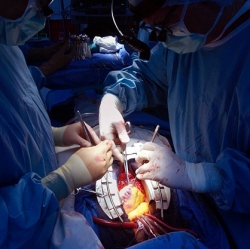
A patient with eye disease is set to become the first person to be treated with induced pluripotent stem cells. Cells of this type have been considered promising for future treatments since their creation eight years ago, which was itself a milestone. This human test is set to be a historic moment.
It’s also an anxious one. Stem cell therapies carry the risk of creating tumors, although Nature News reports the scientists in charge of the Japanese trial found their treatment did not cause tumors in mice and monkeys. In addition, there might be other risks to the treatment that scientists aren’t yet aware of; stem cell therapies of all types are only just being tried in humans.
Induced pluripotent stem cells are special because they’re not made from embryos. Instead, they come from harvesting skin cells from people, then treating those cells with genes that reverse the cell’s life stage back to its stem cell state. That means scientists are able to make induced pluripotent stem cells from cells taken from a patient’s own body. The resulting cells should be well matched to the patient’s own genetics, although it’s possible the "induction" part of the process introduces genetic aberrations into the cells.
